 The ultimate outcome of all your expense and effort when building a new homebuilt airplane is going to be the performance delivered by the propeller attached to your engine. Choosing a propeller type and supplier can be as simple as following the recommendation of the original designer or as complex as sifting through websites and input from fellow builders. In our annual roundup of propeller companies, we’ll try to update information and developments from the broad array of prop suppliers and revisit the subject of propeller design to help guide your choice.
The ultimate outcome of all your expense and effort when building a new homebuilt airplane is going to be the performance delivered by the propeller attached to your engine. Choosing a propeller type and supplier can be as simple as following the recommendation of the original designer or as complex as sifting through websites and input from fellow builders. In our annual roundup of propeller companies, we’ll try to update information and developments from the broad array of prop suppliers and revisit the subject of propeller design to help guide your choice.
If your homebuilt project is going to use a certified engine, you may feel the need to stay with an FAA-certified propeller, which limits your choices to the major U.S. manufacturers of such props—Hartzell, McCauley, Sensenich—and the foreign companies that have gained reciprocal certification, such as MT-Propeller. On the other hand, aside from perhaps shortening the Phase I flight testing period, there’s no pressing reason to go with a certified propeller on your homebuilt. The non-certified propeller route offers many more options, including some Experimental-category props offered by traditional certified propeller makers. From those crossover models, your search can also lead to propeller suppliers who have no interest in offering certificated props, preferring to concentrate solely on the Experimental market.
The ultimate Experimental-category propellers are the custom-made props created for your particular engine and airframe combination. If you give custom prop builders your horsepower and speed range, they can create a special propeller just for your aircraft. In some cases this may involve a bit of tweaking to bring it right into the performance slot you desire, matching it exactly to your real-world operating regime.
Propeller Progression
Starting at the basics, a simple fixed-pitch two-blade airscrew will keep the cost down and simplify installation. Your engine may have been set up to only accept such a primitive device. A fixed-pitch propeller can be made of laminated wood, forged aluminum or composite materials with various core constructions. Fixed-pitch means you’ll have to live with the performance compromise inherent in the pitch that’s built into the blades. Engine rpm changes as airspeed varies unless the throttle is continually adjusted.
Propeller pitch is akin to an automotive transmission’s gearing ratio: With only one “gear,” your fixed-pitch propeller will likely be targeted more toward level cruising flight, where the airplane spends most of its time, to the detriment of takeoff and climb performance. However, there is a “sweet spot” range for a given blade pitch within which performance deteriorates by 10% or less from an optimum pitch. Some prop builders claim their blades have the ability to flex under load to achieve some shift in pitch that gives better performance than a true fixed-pitch blade.
Experimental aircraft frequently utilize ground-adjustable propellers, with blades that can be rotated in a special hub mounting, enabling their pitch to be tuned to deliver maximum thrust at a certain airspeed. Such technology dates from the 1930s, when adjustable steel and aluminum propellers were widely used. Once the adjustment is set, you’ll have a fixed-pitch propeller until you can land and readjust the blade settings. Seldom do builders change the pitch once its proper setting is determined.
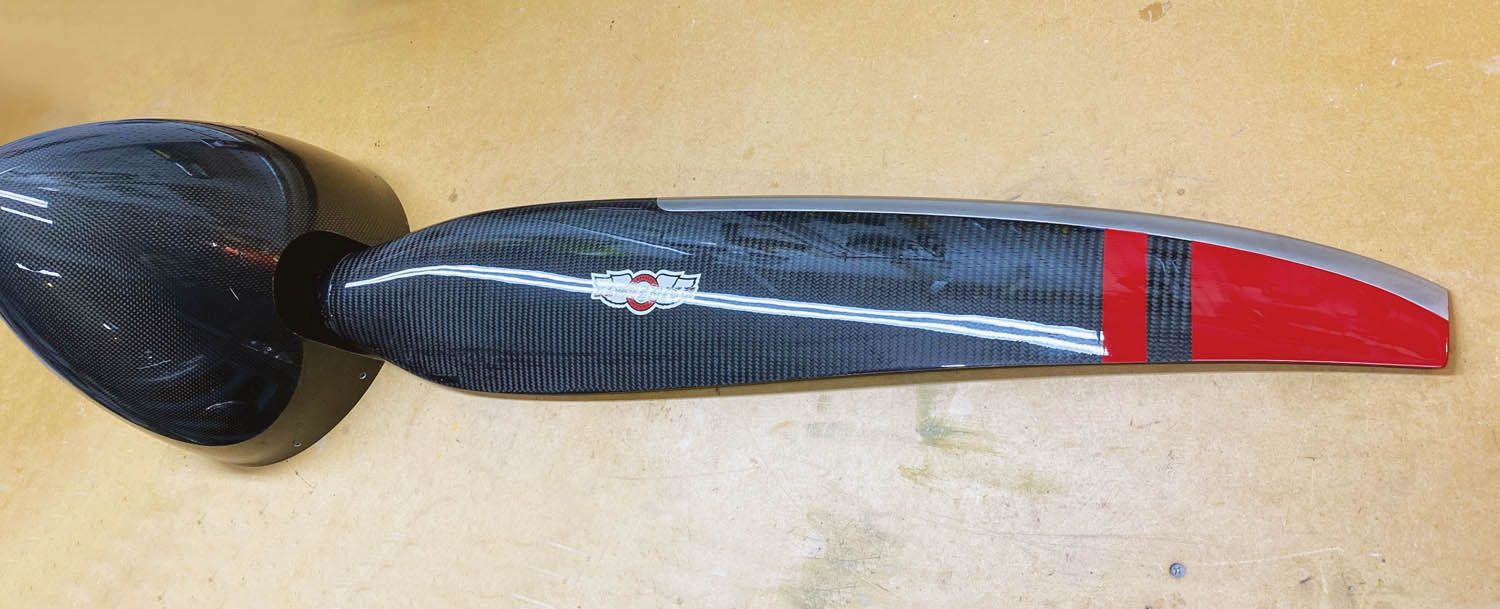
Of course, pilots would rather be able to adjust the propeller pitch in flight, leaving it in a low pitch setting for takeoff and initial climb, then dialing it toward higher pitch to keep the engine from over-revving as airspeed increases in level flight. Such in-flight adjustments usually require intermittent activation of an electric motor to precisely toggle the desired engine rpm. Some motorgliders, aka self-launching sailplanes, have three-position manually adjustable propellers that are shifted with the engine at idle, offering climb, cruise and feathered (engine off) positions. Adjustable propellers perform as fixed-pitch devices once set, so there will still be rpm changes as airspeed increases and decreases during maneuvering flight.
Naturally, more capability is always better, so the next step in complexity is to add a governor to the pitch-change mechanism, constantly varying propeller pitch during flight so engine rpm is held steady despite throttle and airspeed changes. Constant-speed propellers are complex devices and require a means of imparting the pilot’s desires to the propeller, through either electricity or oil pressure delivered to the prop hub. Having more moving parts to wear out means maintenance is inevitable. Also, the extra up-front weight of the constant-speed prop and governor has to be taken into account.
Multi-engine airplanes require a means of stopping the propeller to reduce drag in the event of an in-flight engine failure, hence the feathering propeller was invented to stop a windmilling propeller from being a giant air brake. And for times when adding even more drag would be desirable, as during landing rollout, someone came up with reversing propellers, applying engine power for braking.
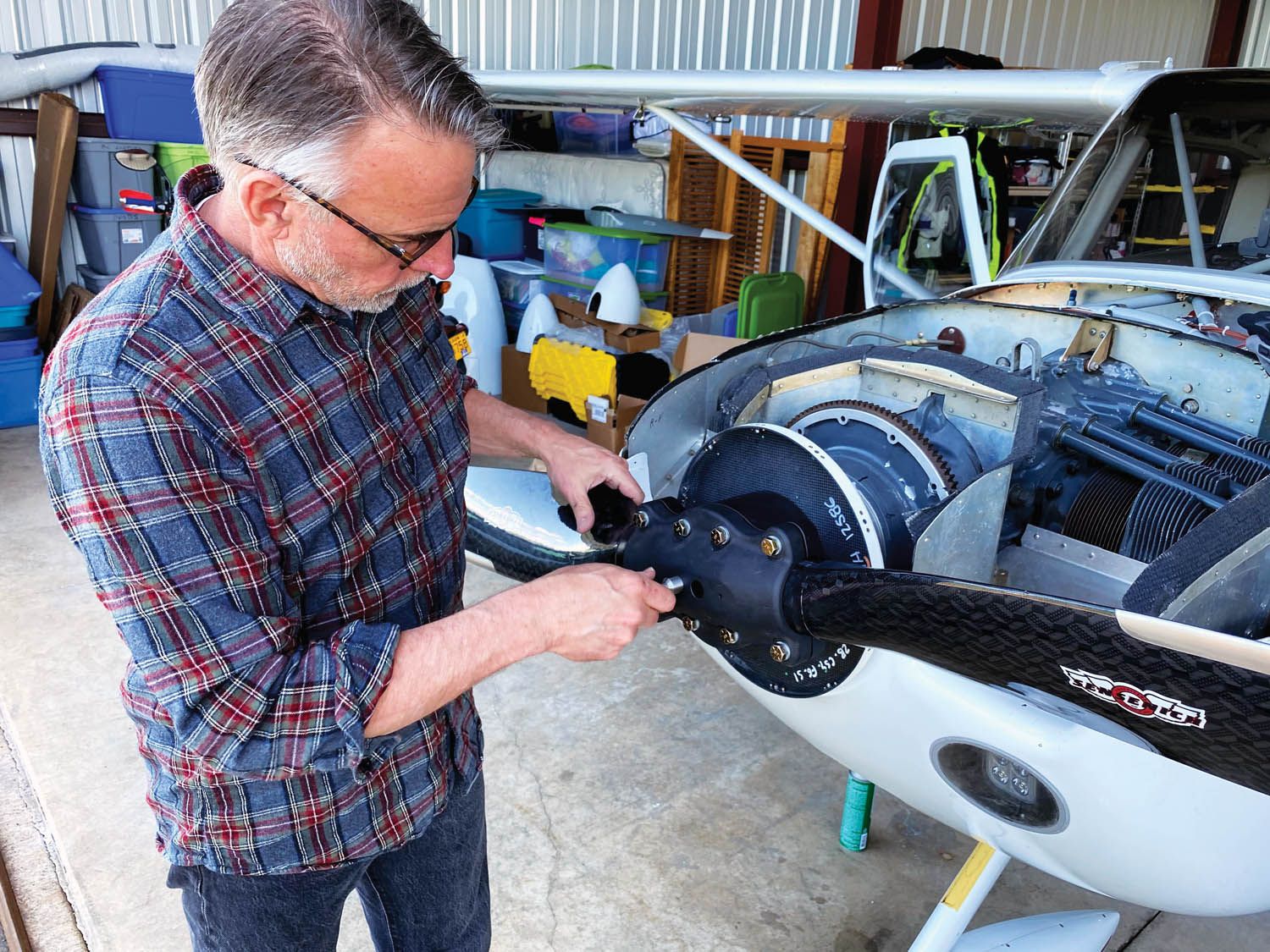
Seeking More Benefits
There’s something to be said for simplicity. Failure is unlikely to occur in an item of equipment that’s not installed, and keeping extra weight off the aircraft is always desirable. Many owners would like the look of a three-blade prop, mistakenly expecting some benefit from performance enhancement. For most small homebuilts, a two-blade propeller is more efficient. Adding blades should only be done if extra horsepower needs to be harnessed; generally speaking, a tri-prop gives more starting torque for takeoff and sounds better, but it’ll require masterful reengineering to offset the inherent loss of performance over a good two-blade propeller, and there’s usually a weight penalty.
I recently encountered an Experimental airplane owner who wasn’t satisfied with his homebuilt’s 180-hp Lycoming O-360 engine, so he spent big bucks taking off the carburetor and installing an aft-mounted fuel injection system. On top of that, he replaced the fixed-pitch propeller with a constant-speed version, something never envisioned by the original kit designer, which required considerable cowling modification. One hopes he considered the effect of the added forward weight.
All airplanes are compromises, and propeller choices are part of the equation when it comes to designing for performance targets. It’s always best to go with the kit supplier’s propeller recommendation and use a propeller type that’s been found to be correct for your engine installation.
As in past years, we’ve compiled the latest information on propeller suppliers. Here are our listings for 2023.
Certified Propeller Manufacturers
| Company | Founded | Certified/ Experimental | Origin | Construction | H.P. Range |
|---|---|---|---|---|---|
| GT Propellers | 1969 | Certified | Italy | Wood and composite | 80 to 2000 hp |
| Hartzell Propeller Inc. | 1917 | Certified | U.S.A. | Metal and composite | Up to 2180 hp |
| McCauley Propeller Systems | 1938 | Certified | U.S.A. | Metal and composite | 100 to 1200 hp |
| MT-Propeller USA, Inc. | 1981 | Certified | Germany | Natural composite | 65 to 1200+ hp custom |
| Sensenich Wood Propeller Co. | 1932 | Certified | U.S.A. | Wood and composite | 50 to 275 hp |
| Sensenich Propeller Mfg. Co., Inc. | 1932 | Certified | U.S.A. | Metal | 65 to 200 hp |
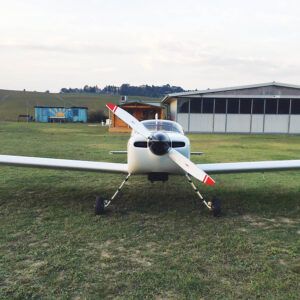
GT Propellers
At press time, we had received no reply to a request for an update on GT Propellers, based at Rimini in northeastern Italy. Relying on previous info, we can only quote their website: Italian propeller maker GT Propellers offers wood-core carbon-fiber props in two- to five-blade designs, in fixed, ground-adjustable and constant-speed applications. They’ve had a 30-year relationship with Tecnam Aircraft, using GT props in Rotax engine applications.
Hartzell Propeller Inc.
Now a part of a newly formed Hartzell Aviation umbrella that also includes exhaust and engine mount repair and fabrication, as well as the engine accessories division, Hartzell Propeller is the flagship component of Hartzell Aviation. In business for well over a century, Hartzell Propeller continues to develop robust propellers for Experimental aircraft.

Currently, Hartzell is featuring the Explorer, a three-blade carbon fiber prop for cross-country cruising with Lycoming 320/360/390 engines and some 540s as well. For STOL work, the Pathfinder three-blade composite-blade model works well on select Lycoming 360 and 390 engines, and for backcountry and floatplane operators Hartzell offers its Trailblazer two- or three-blade prop for certain Lycoming 360 through 580 powerplants. Hartzell’s popular Blended Airfoil propeller, used on many kit airplanes for cross-country flying, is a two-blade constant-speed aluminum prop with swept-tip blades for most 360 and 390 Lycomings. For the next generation of aerobatic propellers, Hartzell offers the Talon carbon-fiber two- or three-blade propeller, usable on select AEIO-360, 540 and 580 Lycoming engines.
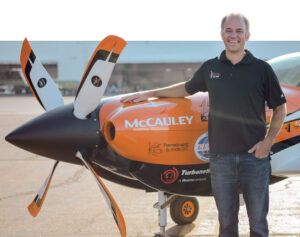
McCauley Propeller Systems
As a wholly owned division of Cessna Aircraft for the last 62 years, continuing as part of Textron Aviation Inc., a Textron Inc. company, McCauley has been in the aluminum-blade propeller business since 1946. It’s now focused largely on supplying original-equipment props for the Textron fleet and marketing the Blackmac brand of STC’d retrofit products. There are over 350,000 aircraft with McCauley propellers out there in service, so if you wind up with a used McCauley constant-speed prop on your project, it’ll be well supported.
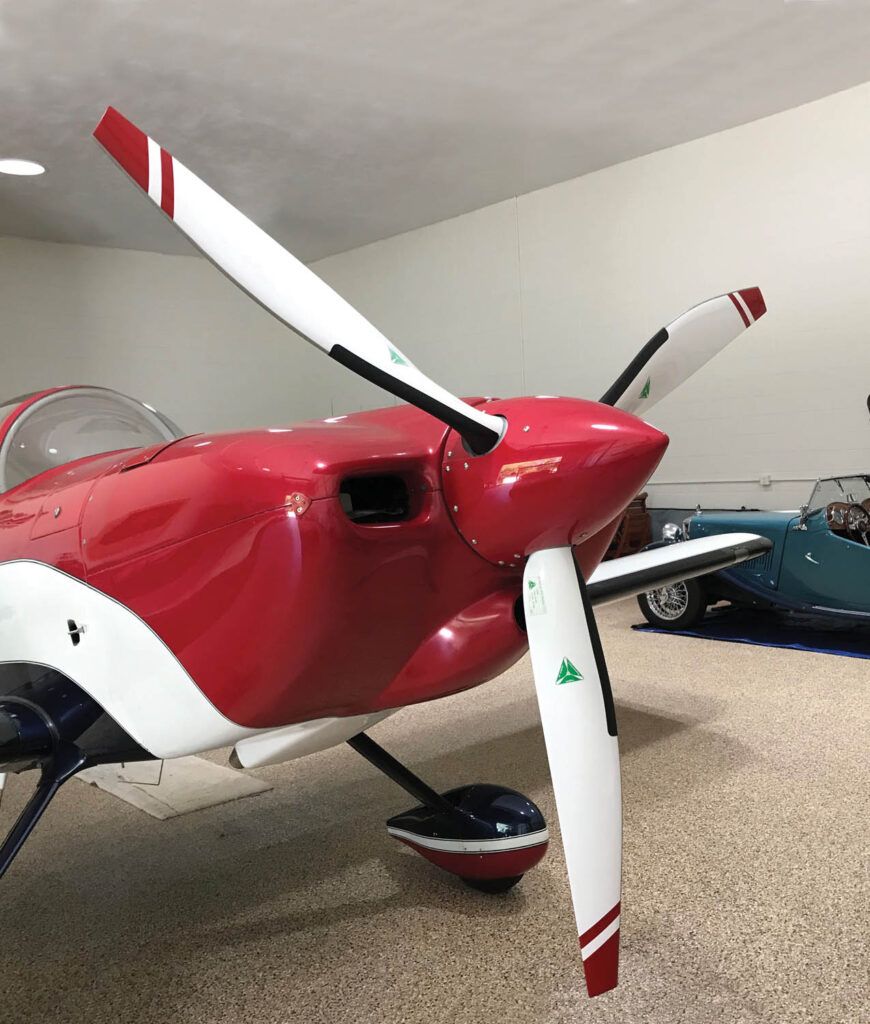
MT-Propeller USA, Inc.
While of German origin, the MT-Propeller line of “natural composite” props is supported in North America through a company-owned service center in DeLand, Florida. MT offers a wide variety of constant-speed propellers for single-engine planes as well as feathering and reversing systems for piston and turbine twins. Recent STC approvals were five-blade propellers for the King Air 300/350, three-blade props for Piper’s PA-34-200 and a five-blade propeller for the turbine-conversion Cessna 206. Last September, MT-Propeller flew experimental 11-blade propellers mounted on a Piper Cheyenne.
Sensenich Propeller Company
A major U.S. propeller maker dating back some 90 years, Sensenich started out in Pennsylvania, where it still makes its aluminum props, but it now operates as one company with two divisions, building its traditional wood fixed-pitch products and modern composite designs in Plant City, Florida. Airboat propellers are a major market for Sensenich, which explains its southern plant, and it covers the Experimental aircraft arena with ground-adjustable carbon-fiber STOL propellers. Engine installations include ULPower, Jabiru and Rotax, plus Lycoming O-320 and O-360 engines in Van’s RVs, Bearhawk, RANS and Zenith STOL designs. Sensenich’s latest type certificate approval is for its ground-adjustable carbon-fiber prop in 125- to 180-hp installations. An 82-inch-diameter version is STC’d for the Piper PA-18 with 180 hp.
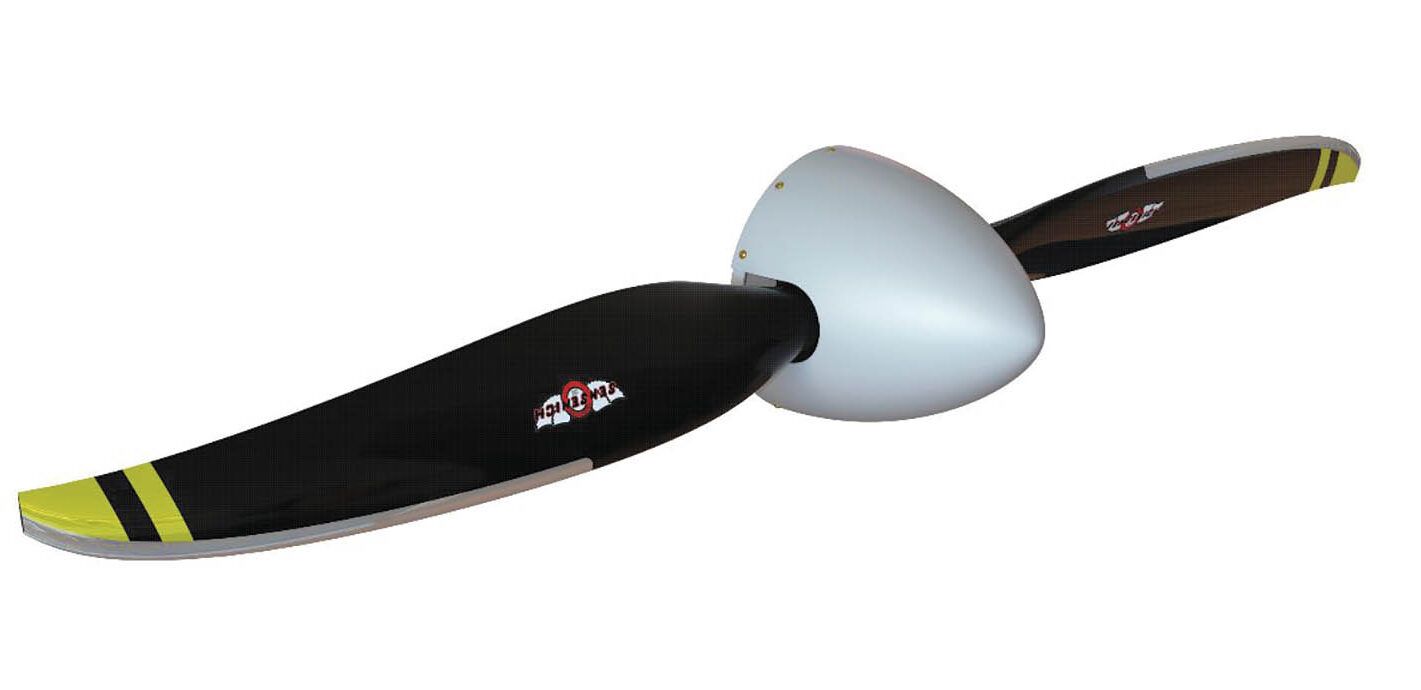
Non-Certified Propeller Manufacturers
| Company | Founded | Certified/ Experimental | Origin | Construction | H.P. Range |
|---|---|---|---|---|---|
| Airmaster Propellers, Ltd. | 2000 | Experimental | New Zealand | Metal/composite | 80 to 300 hp |
| AXSport Aviation | 2015 | Experimental | South Africa | Carbon composite | 80 to 200 hp |
| Arrowprop Company, Inc. | 1961 | Experimental | U.S.A. | Composite | Up to 100 hp |
| Bolly Aviation | 1995 | Experimental | Australia | Composite | Up to 160 hp |
| Catto Propellers | 1974 | ASTM and Experimental | U.S.A. | Composite | 65 to 300 hp |
| Competition Aircraft, Inc. | 1984 | Experimental and ultralight | U.S.A. | Composite | Up to 100 hp |
| Culver Props | 1983 | Experimental | U.S.A. | Wood | Up to 300 hp |
| DUC Propellers USA | 1997 | Experimental | France | Composite | 40 to 180 hp |
| E-Props Propellers | 2008 | Experimental and ultralight | France | Composite | 150 to 250 hp |
| GSC Systems, Ltd. | 1984 | Experimental | Canada | Wood | 35 to 115 hp |
| Hercules Propellers | 2008 | Experimental | U.K. | Wood | Custom |
| Hoffmann Propeller GmbH Co. KG | 1955 | EASA and Experimental | Germany | Wood/composite | Up to 500 hp |
| Ivoprop Corporation | 1986 | Experimental | U.S.A. | Composite | Up to 700 hp |
| KievProp America | 1970 | Experimental | Ukraine | Composite | 40 to 180 hp |
| Performance Propellers USA, LLC | 2009 | Experimental | U.S.A. | Wood | 50 to 300 hp |
| Peszke S.C. | 2000 | Experimental | Poland | Composite | Up to 160 hp |
| Powerfin Propellers | 2008 | Experimental | U.S.A. | Composite | Up to 160 hp |
| PowerMax Propeller by TL Ultralight | 1989 | EASA and Experimental | Czech Republic | Composite | Up to 115 hp |
| Prince Aircraft Company | 1979 | Experimental | U.S.A. | Wood and composite | 100 to 300 hp |
| Edward Sterba Propeller Company | 1980 | Experimental | U.S.A. | Wood | 30 to 200 hp |
| Sterna Aircraft | 1996 | Experimental | U.S.A. | Composite | 30 to 450 hp |
| UltraProp | (see Competition Aircraft) | ||||
| Warp Drive, Inc. | 1989 | Experimental | U.S.A. | Composite | Up to 180 hp |
| Whirl Wind Propellers Corp. | 1995 | Experimental | U.S.A. | Composite | 80 to 400 hp |
| Woodcomp Propellers | 2000 | EASA and Experimental | Czech Republic | Wood and composite | Up to 310 hp |
Airmaster Propellers, Ltd.
In business since 2000, New Zealand-based Airmaster Propellers specializes in electrically controlled constant-speed propeller systems, using composite blades from Sensenich and Whirl Wind mounted in Airmaster’s own hubs. Selecting preset takeoff, climb and cruise parameters or a manual rpm setting, the pilot has full command of the propeller’s operation via a panel-mounted controller. Airmaster’s Martin Eskildsen pointed out that they now offer three- and four-blade propellers for Rotax 915 installations.
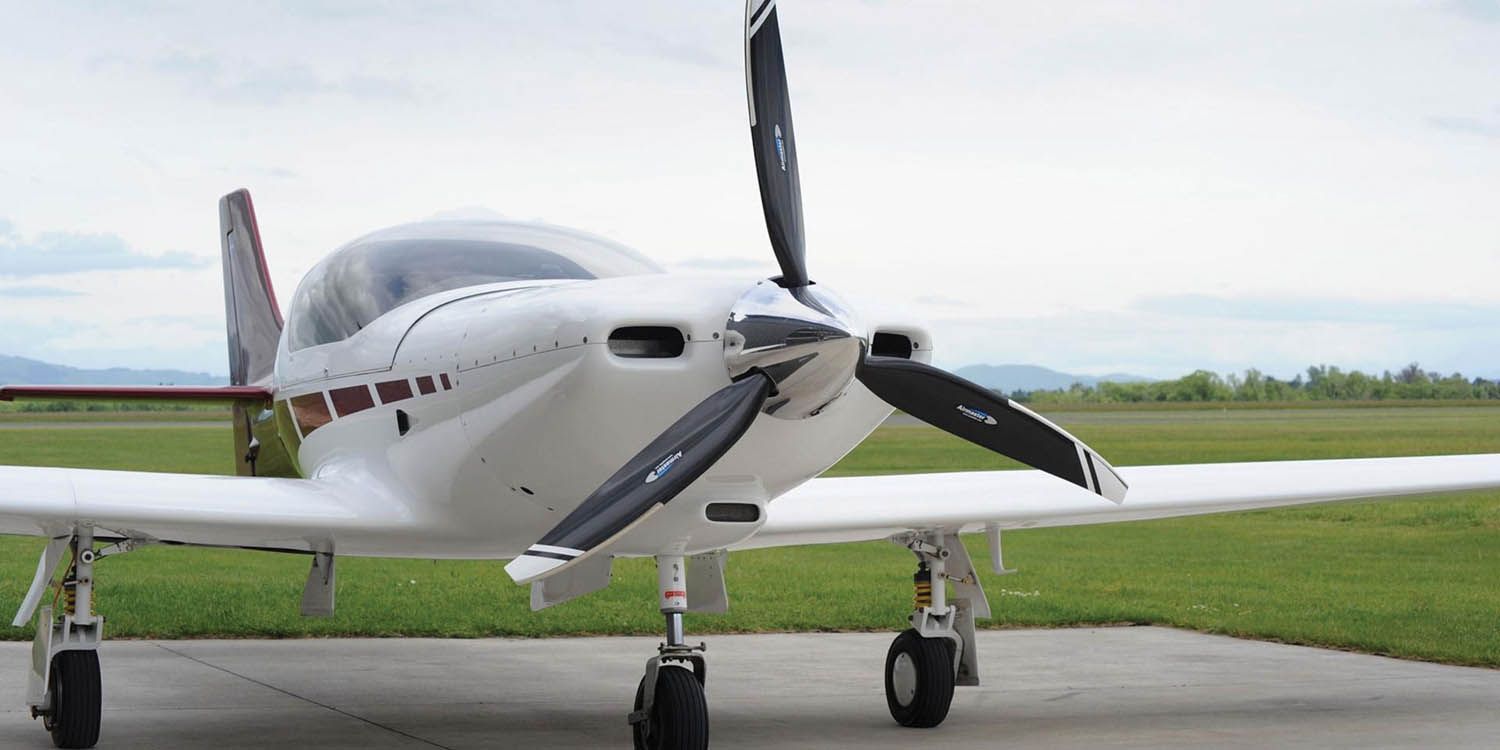
AXSport Aviation
Based in South Africa, AXSport markets an aerobatic airplane of its own design, but also has been in the propeller business since 2015, selling three-blade carbon-fiber electric constant-speed props for Lycomings up to 200 hp and Rotax engines up to the 915. Stainless-steel erosion strips for the leading edges are standard. A color-screen cockpit control is being developed for 2023 availability.

Arrowprop Company
Arrowprop of Meeker, Oklahoma, builds custom composite propellers for light aircraft using engines of up to 100 hp. Diameters are available up to 72 inches. Focused on ultralight-type and small Experimental aircraft, Arrowprop has been in business since 1961. Initially making wood propellers, they now only use composite technology.

Bolly Aviation
Australian-based Bolly Aviation concentrates on making carbon-fiber propellers for LSAs and ultralight aircraft with up to 160 hp. They provide ground-adjustable props of two-, three- and four-blade configurations, fitted with Bolly’s Dura-Tuff leading edge protection. The Optima Series 3 units are for engines with reduction drives, while the Series 5 props are designed for direct drive applications.

Catto Propellers
For nearly 50 years, Catto Propellers has been a noted propeller supplier for Experimental airplanes. Their props utilize a maple wood core encapsulated with fiberglass and carbon fiber, primarily fixed-pitch in two- and three-blade styles. However, Catto does have a constant-speed propeller suitable for the Berkut and Velocity canard aircraft and for Super Cub-type bush planes. Leading edge protection can be either a replaceable polyurethane tape or a nickel leading edge. Catto Propellers is located in Jackson, California.
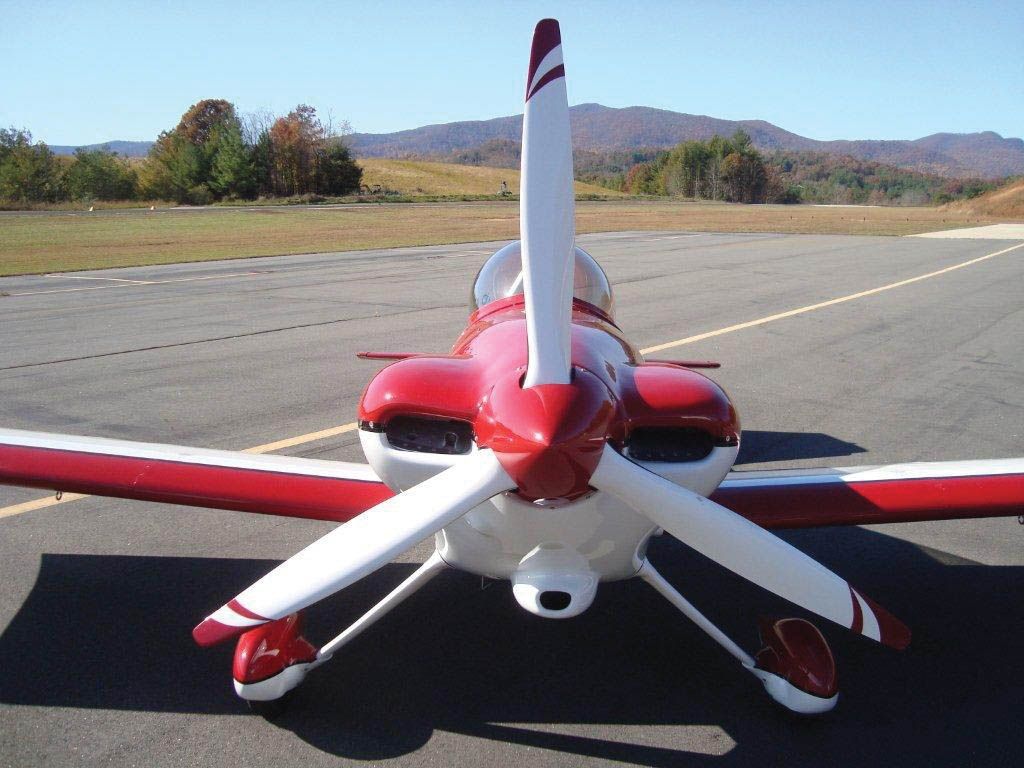
Competition Aircraft, Inc.
Longtime maker of UltraProp propellers for trikes, powered parachutes and ultralights, Competition Aircraft, located in Hurricane, Utah, has composite ground-adjustable props in two- to six-blade configurations. They can ship immediately from hubs and blades in stock.
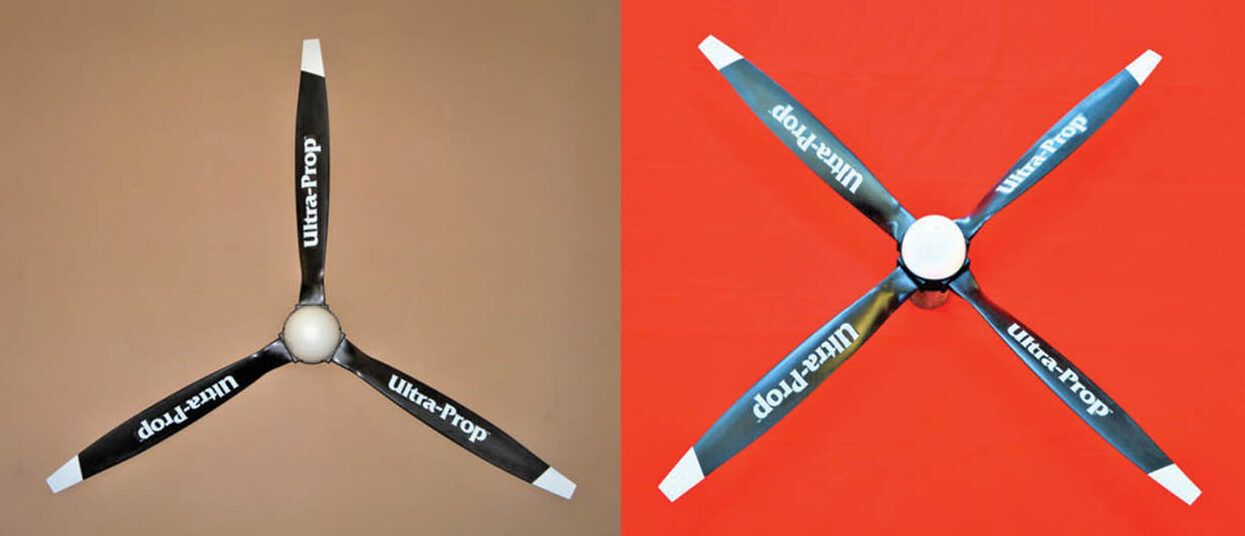
Culver Props
For true artwork, a custom-carved two-blade wood propeller is a visual treat. Alaina Lewis and her crew at Culver Props in Rolla, Missouri, can make you a propeller worthy of your replica antique homebuilt, if you’re willing to wait. She reported a three- to four-month lead time when we talked, an improvement over the yearlong backlog Culver was experiencing during peak times. Much of their business is in “wall hanger” decorative propellers, executed in beautiful laminated birch, mahogany and maple woods.
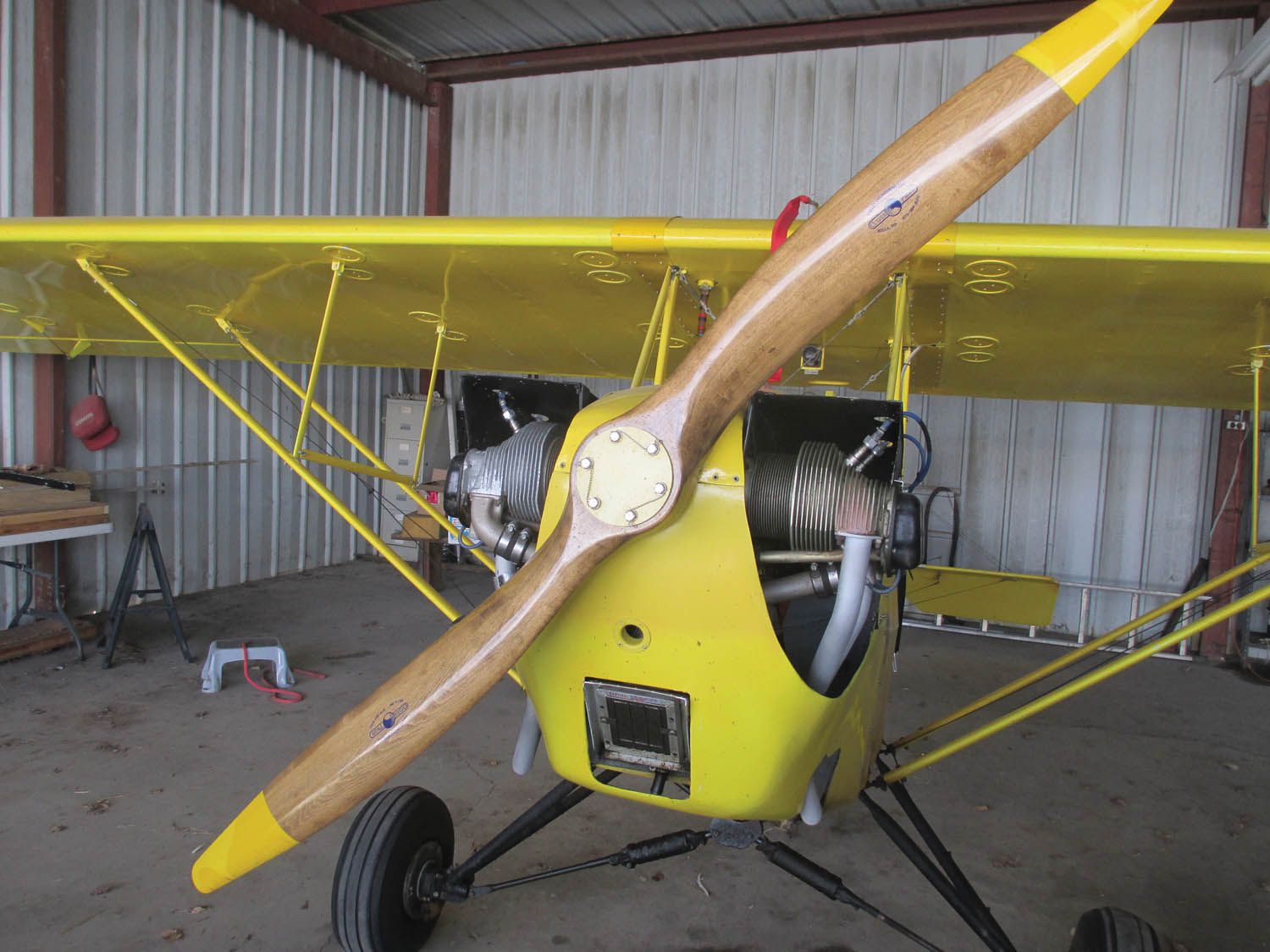
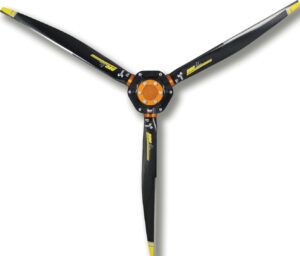
DUC Propellers USA
Based near Lyon in southeastern France, DUC Propellers has a North American office on the Sebring, Florida, airport. DUC offers a wide range of light aviation propeller styles in its Flash, Swirl, Windspoon and Flair designs. A Forged Carbon blade process is used for two- to five-blade props, which are ground-adjustable and available with electric or hydraulic in-flight pitch control. SportairUSA in North Little Rock, Arkansas, is a dealer for DUC as well.
E-Props Propellers Company
E-Props Propellers, located in southeastern France, reportedly produces 45,000 propeller blades per year for Light Sport Aircraft, claiming to be the lightest propellers in the world. New this year is its Glorieuse three-blade carbon constant-speed prop with titanium leading edges, targeted for Rotax 9 series engines up to 140 hp, with a total all-up weight of 8.8 pounds. ASTM-certified E-Props are flying in 84 countries, according to company President Anne Lavrand.
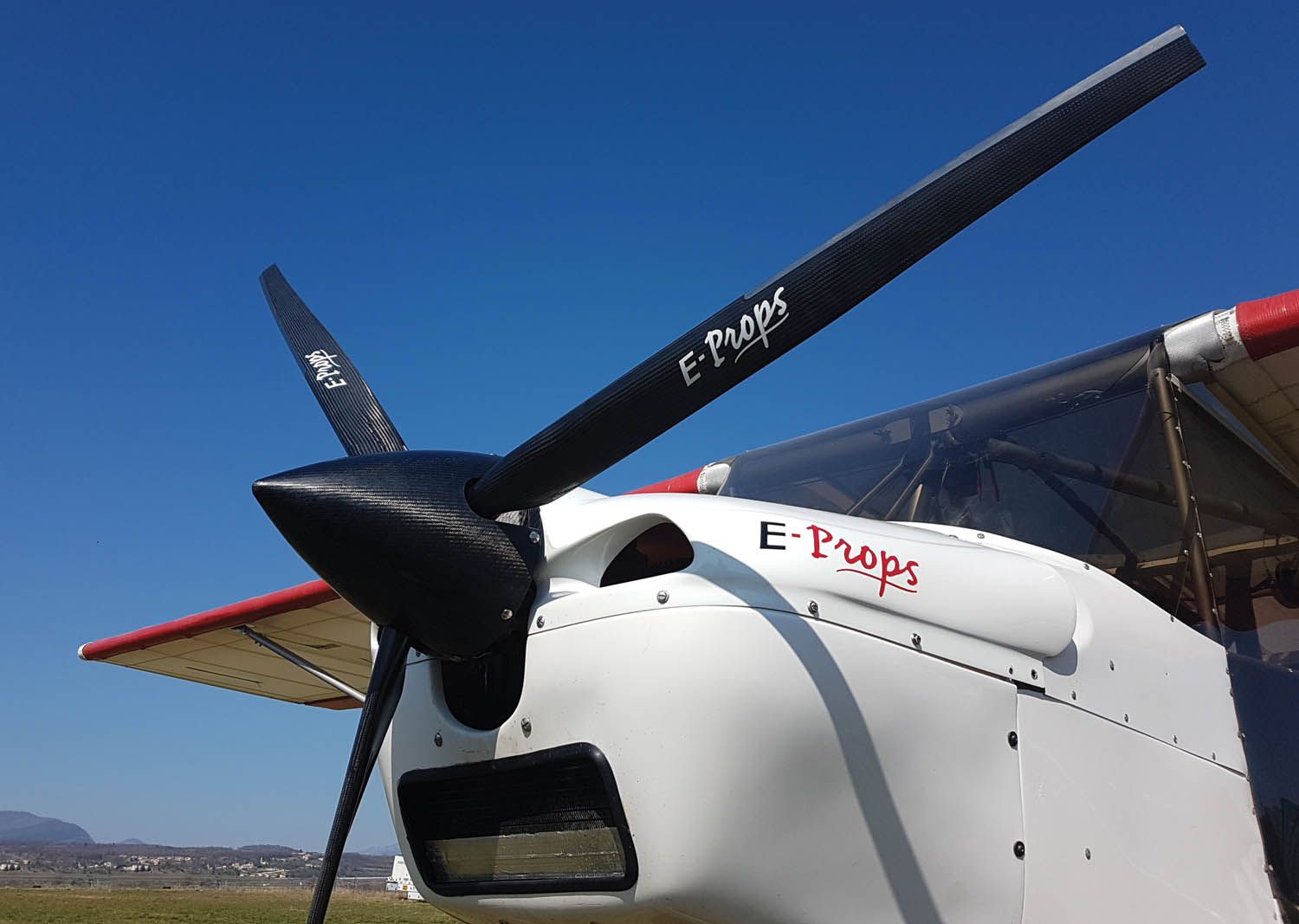
GSC Systems
British Columbia-based GSC systems uses clear eastern maple to craft its propellers for ultralights, trikes and PPCs, in two- and three-blade styles. The Tech II and Tech III props are all ground-adjustable, with individually replaceable blades in case of damage. An inlaid leading edge is optional. Downsized GSC propellers are even showing up on drones, representing a new market for the company.
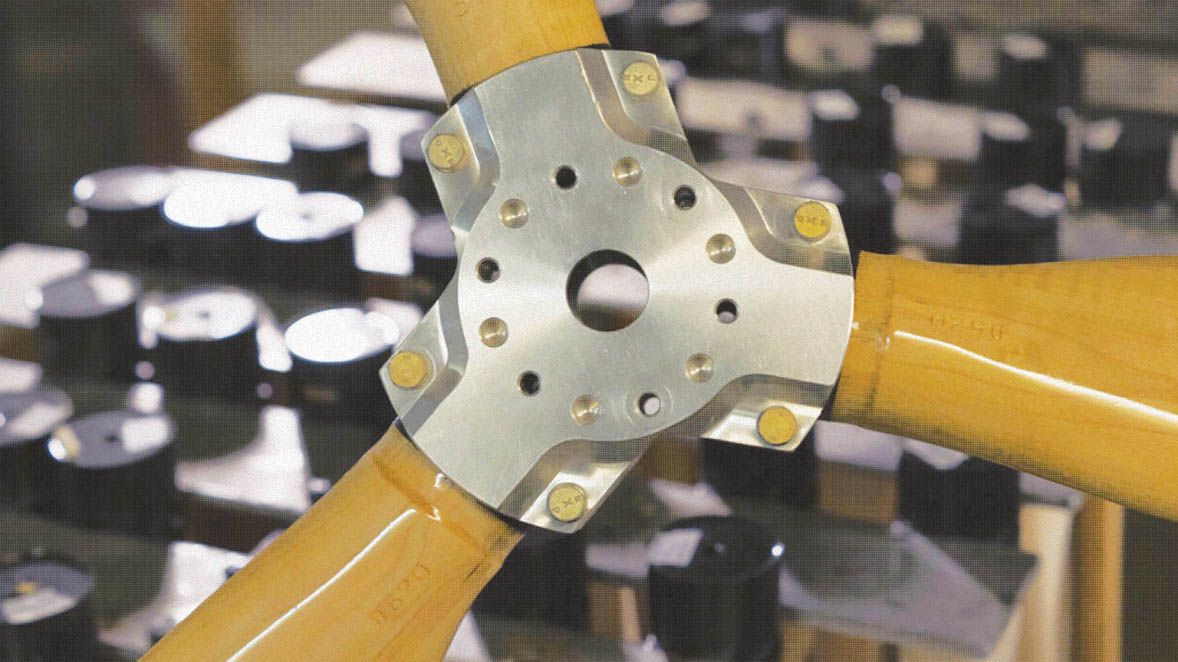
Hercules Propellers
Hercules Propellers’ Rubert Wassey makes fine laminated-beechwood propellers at Stroud, in south-central England. Replica props for antique airplanes and warbirds are a specialty, keeping these vintage birds airworthy. Each Hercules propeller is custom CNC machined for a specific application, incorporating a “Hercuthane” leading edge shield. When visiting their website, don’t forget to click on the expanded contact port in the upper left corner. It’s well worth browsing.
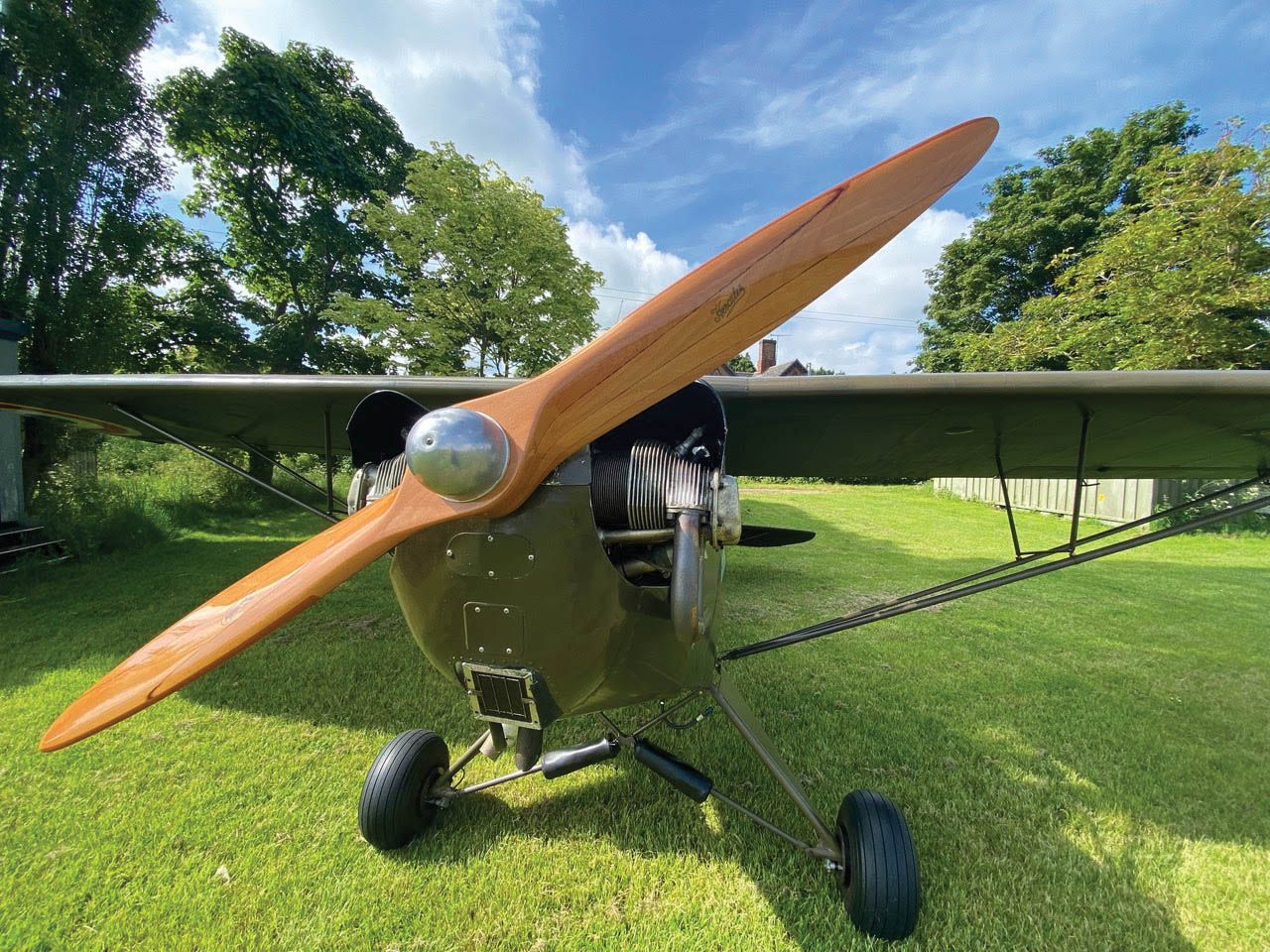
Hoffman Propellers, GmbH
Even though it did not respond to our inquiries, the Hoffman Propeller firm in Germany is known to make excellent wooden/composite propellers for a wide variety of aircraft.
Ivoprop Corporation
The Ivoprop is long known for its electrically actuated internal cam, giving the pilot the ability to change pitch in flight to optimize performance in different phases of flight. The carbon graphite fiber construction allows twisting action of imbedded rods in the blades, giving the pilot the ability to manage engine rpm as desired. Ivoprop’s Medium series can handle up to 150 hp, with the Magnum series carrying up to 700 hp. Stainless-steel leading edges provide erosion protection.
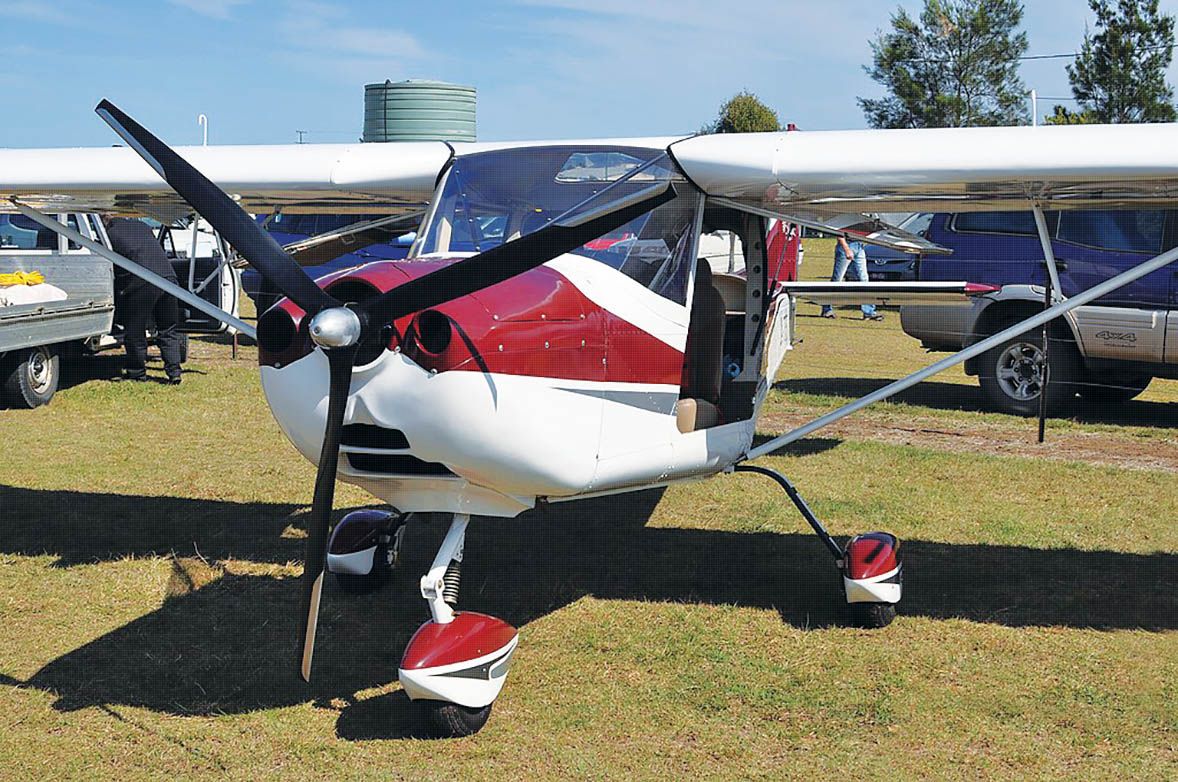
Kiev Propellers
Started 50 years ago making wood propellers, Kiev props are currently using autoclaved composite blades mounted in ground and in-flight adjustable hubs. Understandably, the terrible wartime conditions in Ukraine have taken a toll on shipments of both raw materials and finished product, but the Kiev factory is operating and propellers are being made, we were told. Ted Bryant at KievProps America in Cambridge, Maryland, the importer for all of the Americas, says they were stocked up in late 2021 and were able to ship from inventory up through July 2022. His large orders were being filled and product was being received when we talked in November 2022. All 12 workers at the plant in Ukraine were safely back from military duty and making propellers.
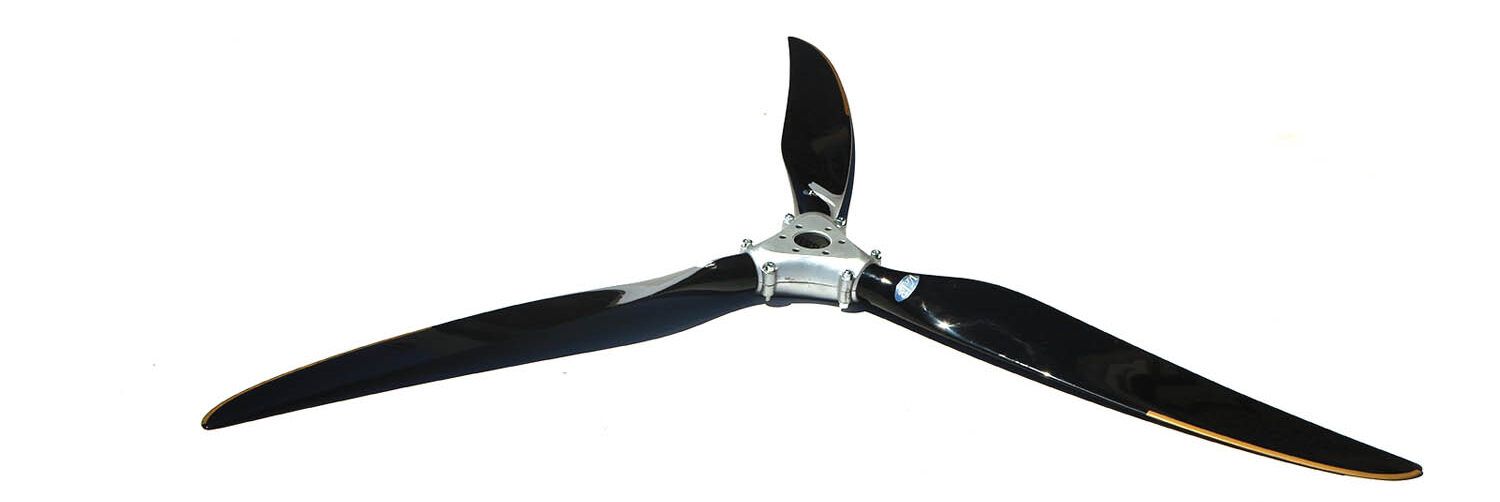
Kiev Props are designed for reduction-drive engine installations only, from 40 to 200 hp, using two- to six-blade styles. Blades are rated for an eight-year service life, with no hour limit, and hubs are rated for 15 years.
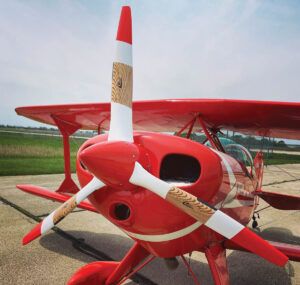
Performance Propellers USA, LLC
Located in the suburban Chicago area at Yorkville, Illinois, Performance Propellers has a 35-year history of making custom two- and three-blade wood propellers. One of its specialties is making props for Verner radial engine installations. Each propeller is created for a specific customer need and tweaked as needed for optimum performance. Business at Performance Props was booming, we were told, with lead times of up to a year, so it’s best to place your order early in the project.
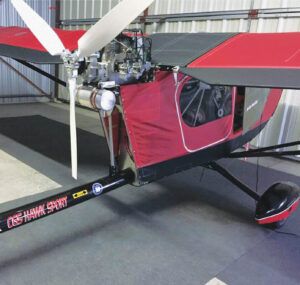
Powerfin Propellers
Primarily supplying prepreg carbon fiber propellers for ultralights, trikes and powered parachutes, Powerfin is located in Hurricane, Utah. It has two- to five-blade hubs to serve installations of up to 160 hp, offering optional custom blade colors. The low inertia of the Powerfin props helps prolong reduction gearbox life, according to the company.
PowerMax Propeller by TL Ultralight
The PowerMax propeller is built by TL Ultralight, builders of the Sirius, Sparker, Stream and Sting European ultralight aircraft in the Czech Republic. A three-blade carbon fiber propeller that’s in-flight adjustable, fitted to Rotax 9-series engines, the PowerMax is represented by SportairUSA in Little Rock, Arkansas, which also distributes TL airplanes.
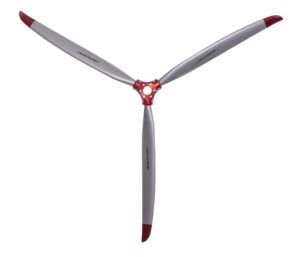
Peszke S.C.
A Polish company that’s been in the propeller business since 2000, Peszke makes a B-Line three-blade carbon-fiber propeller with blades mounted in an aluminum hub, suitable for up to 160 hp, according to company literature. Other products are folding motorglider props and lightweight props for trikes, gyros and ultralights. Owner Jerzy Peszke is seeking a U.S. distributor.
Prince Aircraft Company
Lonnie Prince reports a 10-month backlog in his order book, still making his trademark P-Tip wood/composite propellers at his plant in Whitehouse, Ohio. The P-Tip’s small winglet tip design adds effective blade length without sonic stress, and Prince’s scimitar-shape props reportedly can twist to change pitch with altered airspeed. A special elliptical-tip blade design for Hummel VW engine installations is also a popular Prince Aircraft propeller product.
Edward Sterba Propeller Company
From one of the great names in custom wood propeller building, we received the following response when we contacted Ed Sterba: “I have ended my propeller business this past May, after 42 years. It’s been a great business, with great customers. Just about 6000 props, all handmade. Thanks for carrying my listing all these years.” What a great legacy!

Sterna Aircraft, LLC
Repeated attempts to contact Sterna Aircraft, makers of carbon-fiber ground-adjustable propellers for light aircraft in Zephyrhills, Florida, have drawn no response, although the website remains active.
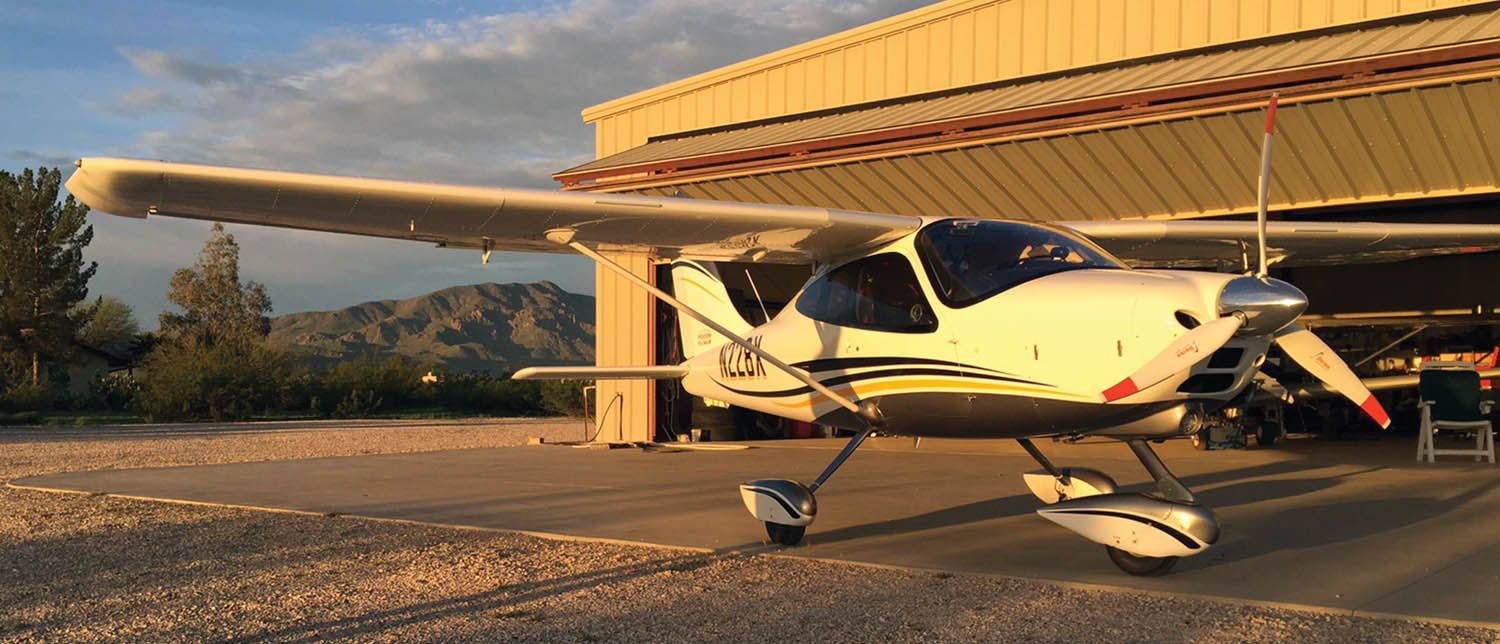
UltraProp
(see Competition Aircraft)
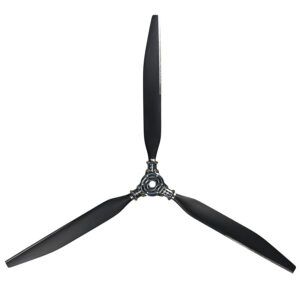
Warp Drive, Inc.
In business since 1989, the folks at Warp Drive in Ventura, Iowa, are still making their well-regarded ground-adjustable carbon-fiber propellers, in two- to six-blade configurations. In addition to gyrocopter, trike and PPC applications, Warp Drive propellers are also used on light sport and Experimental airplanes, ranging up to 180 hp.
Whirl Wind Propellers Corporation
Whirl Wind Propellers in El Cajon, California, has been making carbon-fiber props in two- and three-blade designs since 1995, using patented closed-mold net-shape blades. Electro-formed nickel leading edge protection is standard. The 300 series three-blade constant-speed props are targeted for RV-style aircraft with O-320 to O-390 engines, weighing in at just 36 pounds. The 330 series comes in two-blade 72-inch diameter and three-blade 73-inch styles, with the three-blade prop suited for O-360 to IO-540 installations. Standard color is black carbon fiber with a clear coat, but optional white-painted blades with red tips are available.
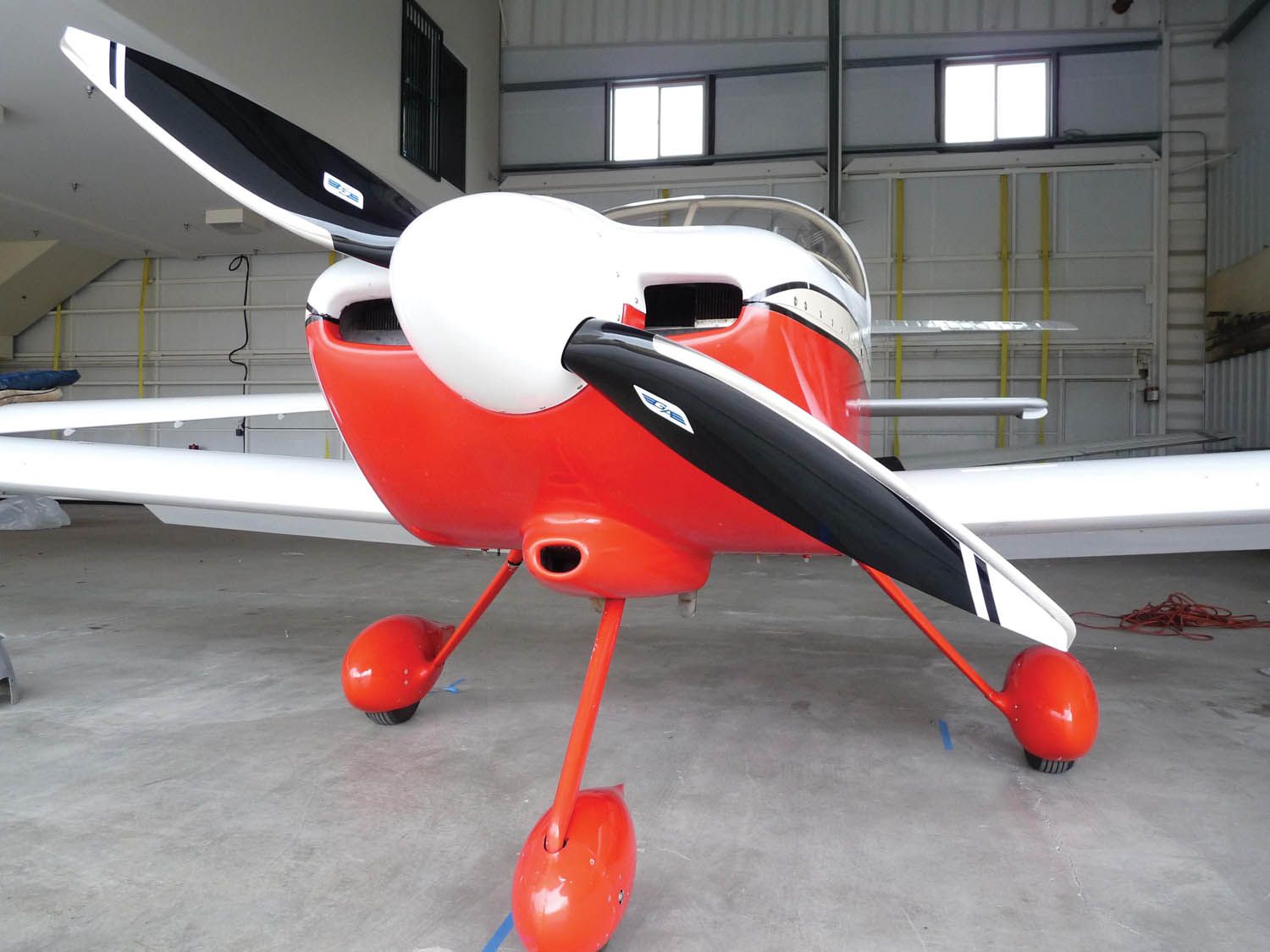
Woodcomp Propellers
A maker of wood and composite variable-pitch propellers in the Czech Republic, Woodcomp offers a KW-10 constant-speed propeller for engines rated from 200 to 310 hp, as well as a ProPulse aerolastic propeller that is said to deform under load to perform like a constant-speed prop. It also has a KW-30 hydraulic variable-pitch propeller.
Photos: Paul Dye, Omar Filipovic and courtesy of the manufacturers.

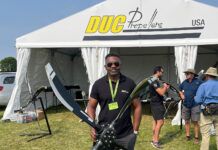





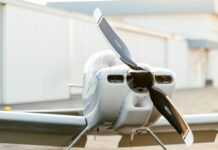
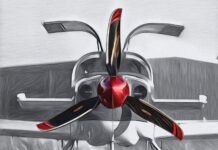
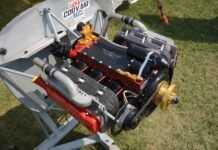
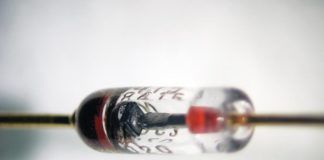

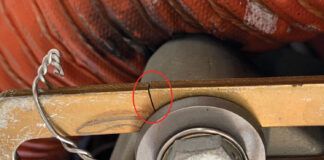
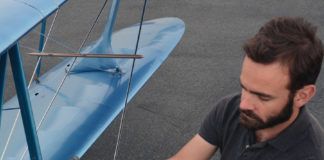
You list several props for Lycoming engines but I didn’t see anything llisted for Continentals. Does anyone make Props for small Contential engines?
Auruspropellers, made in Italy http://www.auruspropellers.com